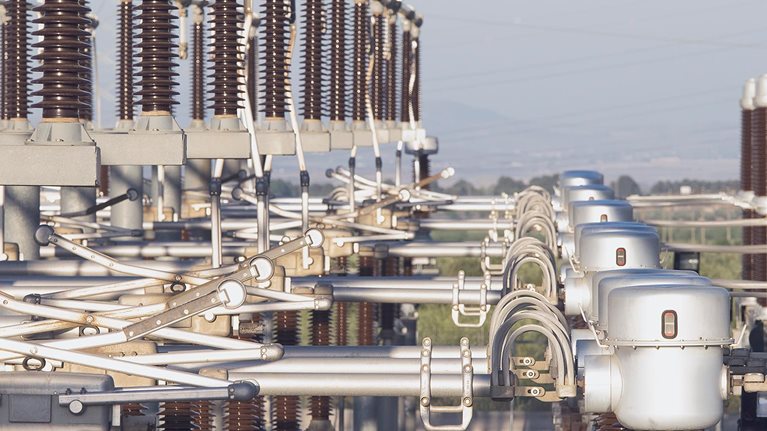If there was ever a question about whether green-tech innovations could succeed in the marketplace, Spain’s Holaluz offers an emphatic, compelling case study. With revenues of more than €500 million in 2021, the company offers services from energy trading to decentralized energy generation. In this conversation with McKinsey’s Philipp Hillenbrand, Holaluz cofounder Carlota Pi Amorós discusses why the time is right for green energy, the role of technology in the company’s development, and how mistakes along the way have positioned Holaluz for success in the long term.
Philipp Hillenbrand: The past couple of years have brought a series of disruptive shifts to suppliers and consumers alike—a trend that seems to be accelerating. Energy prices as well as costs for CO2 emissions are through the roof, energy independence has become a strategic priority for countries, and clean energy has become a priority almost everywhere. To what extent did you expect these dramatic changes, and how prepared was Holaluz to respond to them?
Carlota Pi Amorós: We started the company based on the belief that the industry has a systemic problem. The energy markets were built on the assumption that pollution has no cost and that we can rely on inexpensive fossil fuels like oil, gas, and carbon forever. Now this system is collapsing in a very sudden way. There has also been ongoing public pressure regarding the impact of fossil fuels on the environment, with the cause being adopted by consumers, legislators, and, in a more generic way, public thought leaders. The Russian invasion of Ukraine was just the most recent catalytic element to hyper-accelerate the energy transition. We were always prepared to help drive this transition. And as an agile company, we were also able to quickly adapt to the new reality.
Philipp Hillenbrand: What role does technology play now at Holaluz, and how will that change in the future?
Carlota Pi Amorós: For the past five years, we have been developing specific technology platforms to efficiently source green energy from hydro, wind, biogas, biomass, and solar energy. With our technology, we are able to view and manage the volatility in energy—in a granular way and in real time—to match these producers with the demand patterns of our almost half a million retail customers. We can also use this technology to prevent big price disruptions through hedging.
The perfect energy system balances centralized and decentralized production to alleviate transmission networks and optimize the entire system. With our new “prosumer”1 division, we are also growing in the decentralized-production space. Linking production to our real-time system and knowing how to optimize these flows help make the entire system more efficient. It creates economic value for our consumers and our company. Therefore, we were prepared for the current disruption—but not because we foresaw the exact point in time when it would occur or to what extent. For years, we were focused on our survival, so we tried to use technology to be better than our much bigger, more established competitors.
Philipp Hillenbrand: Technology is one thing. But prosumers with solar panels that need to get installed on their rooftops sounds like it also requires a large workforce. How do you effectively manage this growth in operational resources?
Carlota Pi Amorós: Since our origin is digital, we in fact tried at the beginning to rely on a tech-only solution and a network of external suppliers that we equipped with an “IKEA-style” guide for how to install our solar panels on a rooftop. We failed. The market was not ready; it was a bit like trying to launch a home-sharing app while relying on hotels as the offering. We learned we needed to build our own operational workforce to ensure the right customer experience and control the process. Of course, we still rely heavily on technology to make the process—from route planning to installation—as efficient as possible. We also constantly monitor our operational unit economics and try to bring unit costs down.

Learn to Leap interviews
Philipp Hillenbrand: It sounds like your workforce has grown significantly. How do you manage to preserve Holaluz’s cultural DNA while rapidly scaling and increasing head count?
Carlota Pi Amorós: We identified this problem while scaling. Initially, we as cofounders acted like preachers. It is easy to preach about the essence of what we think will make us successful in a small organization. But this becomes more difficult when you grow beyond 50 employees. Then we tried to distill, as many companies do, a handful of values we thought described our company’s DNA. For example, #KeepRowing is one of our five core values. But soon this was not enough. When I was still able to explain to every new employee what #KeepRowing means, it was simple. But when scaling, suddenly there is room for interpretation. For some, #KeepRowing means going against the current; for others, it means resilience. Therefore, we tried to describe each of these values in short, actionable statements that set the expectations for day-to-day behavior when it comes to decision making, collaborating, and so on.
Recently, we launched a 30-second survey in which every employee has to rate their team’s performance along each of the five values every two weeks. The results form the foundation for the team’s retrospective, with the aim of individually committing to how to do better on the value with the lowest score during the next sprint. In this way, we embed our DNA into the daily work and connect it with a mindset of continuous cultural improvement.
Philipp Hillenbrand: How will Holaluz look in ten years?
Carlota Pi Amorós: It is difficult to say, as our business model is evolving dynamically. We started initially as a green-energy retailer. Then we learned how to get good at tech-enabled centralized energy sourcing. Today, we are in a classical flywheel situation. We have energy consumers in every zip code in Spain as well as prosumers who can provide energy without bearing transmission costs, which are waived in Spain if the distance between production and consumption is less than 500 meters. Plus, we have optimized green-energy sourcing for centrally produced energy. The more prosumers, the better for the consumers, and the more consumers and prosumers, the better for the centralized energy sellers. In the coming years, we will keep powering this flywheel through more technology and a rapid pace of execution. But in ten years? We definitely want to become a full-fledged energy-as-a-service provider, which would include the full suite of mobility offerings.
Philipp Hillenbrand: Holaluz is a Spanish company, but it sounds like you have plans to go beyond your home market.
Carlota Pi Amorós: Definitely! The question is when, and what is the ideal path and pace of internationalization? We have learned with some pain that it is better to be really good at the core of what you are doing before you aggressively scale. At the moment, we are defining what this new core is going to be, and then we will try to become the best at this new core. Then we will expand.
Philipp Hillenbrand: Start-ups often make mistakes when they develop at your pace. What was your favorite mistake, and what did you learn from it?
Carlota Pi Amorós: Mistakes are part of our operating system. But for me, the most insightful ones help me learn something about myself. We tried to architect and launch a fairly complex financial model that would help us funnel future revenue streams to fund growth more directly. The mistake was not so much about the “what”; it was and is a great idea that we will now finally implement. It was my decision on the “how.” The setting I chose was the totally wrong one from the beginning. But I was so committed that I kept the work artificially alive while my gut told me for weeks to kill it, assume the cost, and restart. We lost months. But through this experience, I learned a lot about the value of admitting my mistakes early rather than stubbornly proceeding.
Philipp Hillenbrand: In Spain, there are few “official” unicorns. Why so few, and what needs to change to increase this number in the future?
Carlota Pi Amorós: We are working hard to become the next unicorn and make our contribution. The local start-up and scale-up ecosystem is now developing quite rapidly. Typically, you need three ingredients: regulation that incentivizes people to take entrepreneurial risks, access to risk capital, and true entrepreneurs. We do have the latter in Spain, but the former drivers needed some time to develop. There is still a lot of headroom to make regulation more friendly to start-ups. Risk-capital investors have been increasingly looking to Spain given recent successful examples, but here we also need more development. This takes time, but it is accelerating bit by bit. Therefore, I am more optimistic that the number of Spanish unicorns will grow quite a bit over the coming years.


